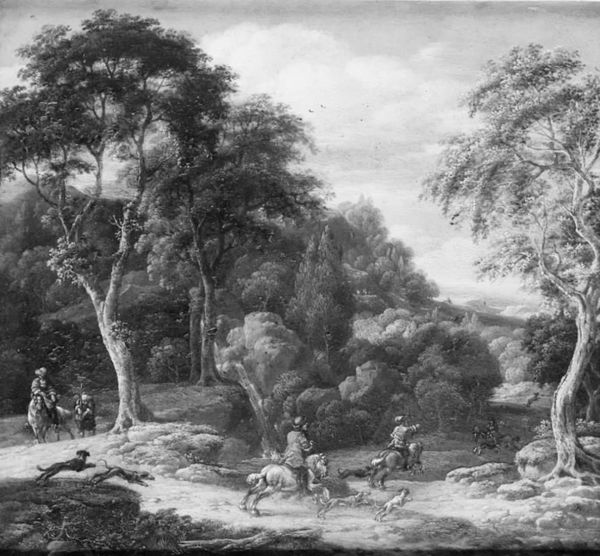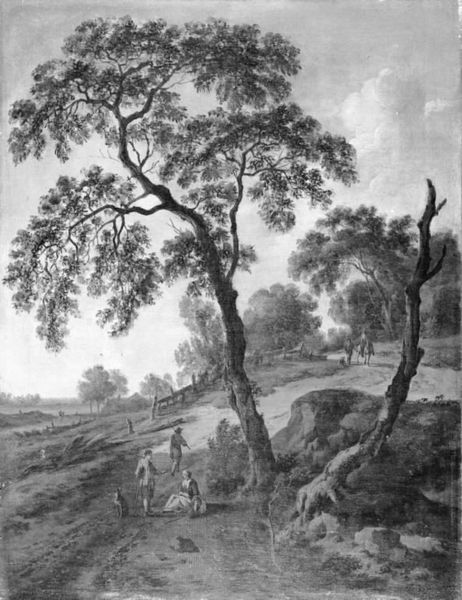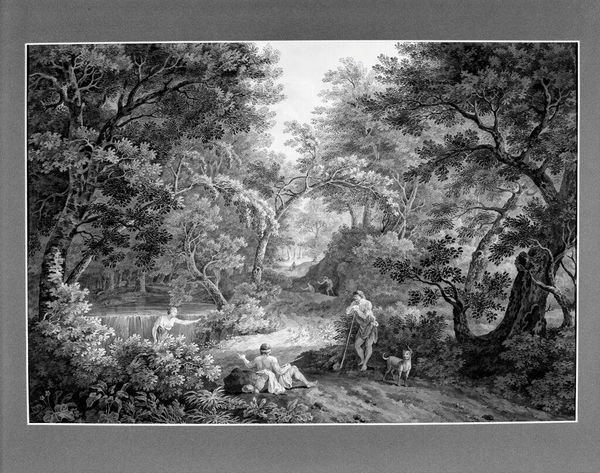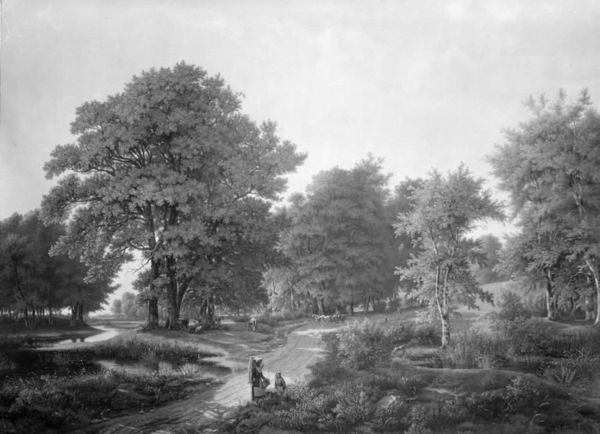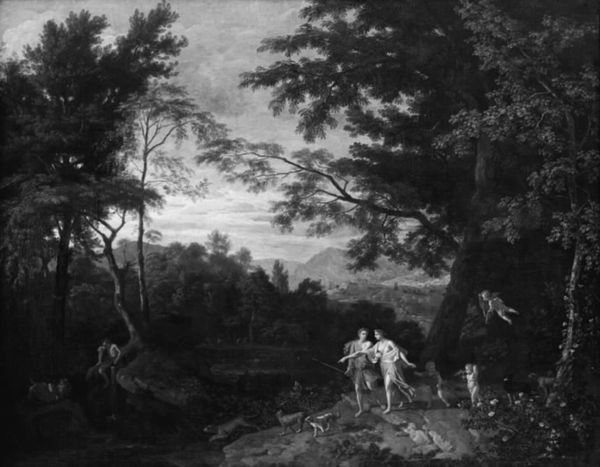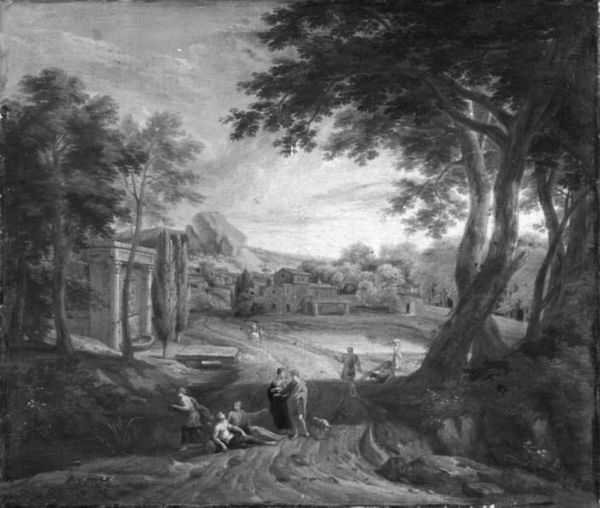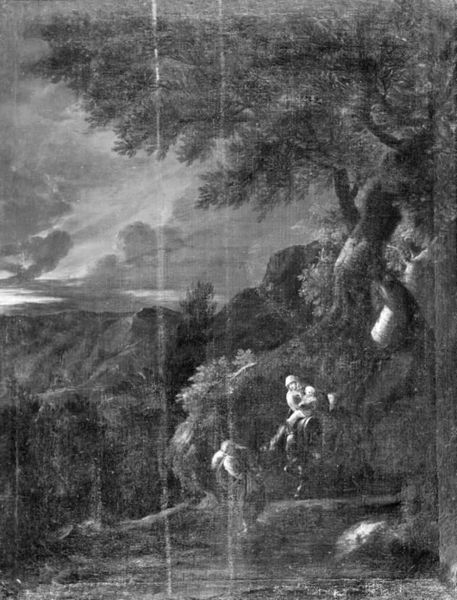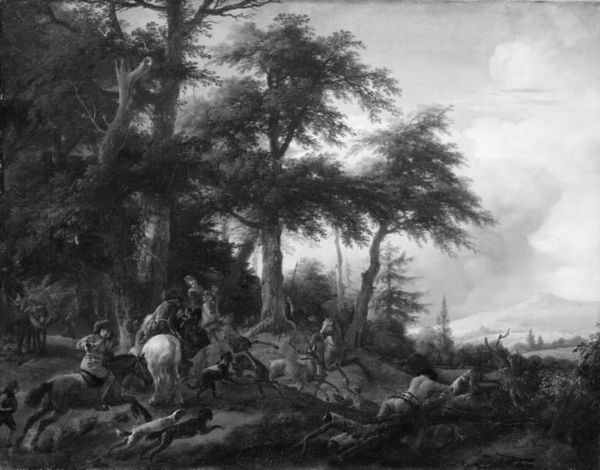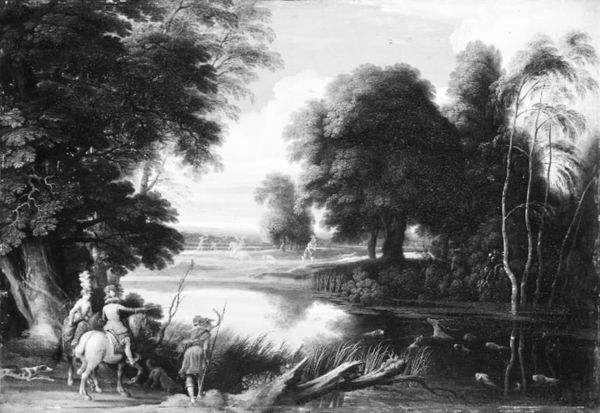
painting
#
baroque
#
painting
#
landscape
#
realism
#
monochrome
Dimensions: 12.5 cm (height) x 17.5 cm (width) (Netto)
Editor: Right now, we're looking at Alexander Keirincx's "Wooded Landscape" from somewhere around 1615 to 1620. It's a painting, and what strikes me most is the dense, almost claustrophobic feeling despite being a landscape. What draws your eye when you look at it? Curator: You nailed the immediate sensation, it's interesting to feel squeezed by a landscape, isn't it? My gaze keeps getting snagged by the contrast between the leafy details, rendered in subtle shades, against the mysterious dark thicket beyond. It's as though Keirincx is pulling back the curtain on something secretive. And then, there are the people... Where do you think they might be headed? Editor: Hmm, good question. Honestly, they seem a little lost. Maybe heading to the forest’s edge for wood? Curator: Lost or simply wandering… Back then, wilderness held a very different meaning. It wasn’t just pretty scenery; it was a place of potential danger, adventure, even spiritual encounters. Those figures, positioned at the painting's heart, become these vulnerable, human-sized measures in the landscape's drama. Look how small they are, they look even smaller than the tree stumps! It's all mood. Don't you just love it? Editor: I see what you mean, that sense of scale makes them look exposed and quite vulnerable. It reframes the monochrome effect, and creates a real feeling of something slightly dangerous, almost romantic, about being swallowed by the landscape. Curator: Exactly! Almost like being pulled back into yourself by being dwarfed against a huge universe! It invites a kind of pensive reflection about where *we* fit into the bigger picture. Thanks, I'm ready for a wander in the forest myself. Editor: And now I understand the thrill of forests of the 17th century! It's a journey inward *and* outward, simultaneously.
Comments
No comments
Be the first to comment and join the conversation on the ultimate creative platform.

